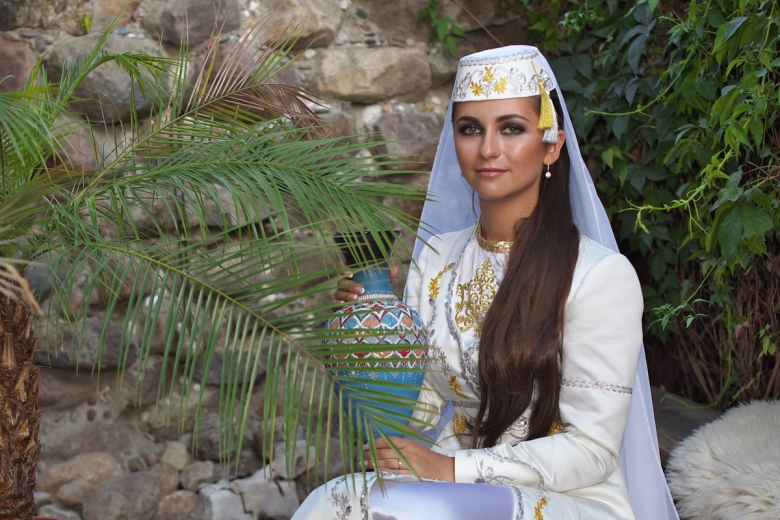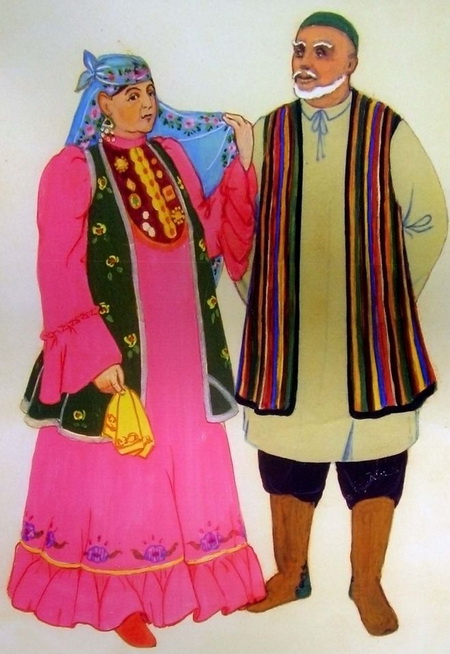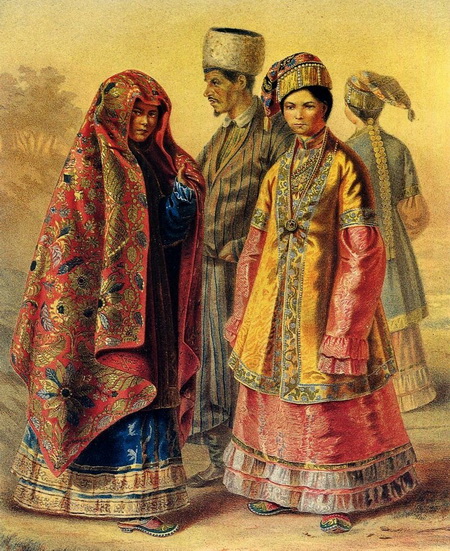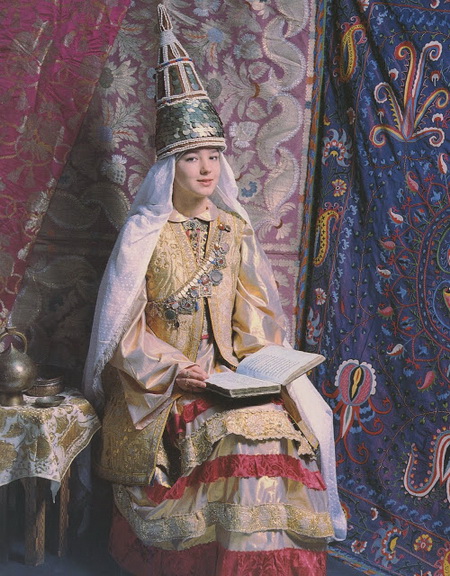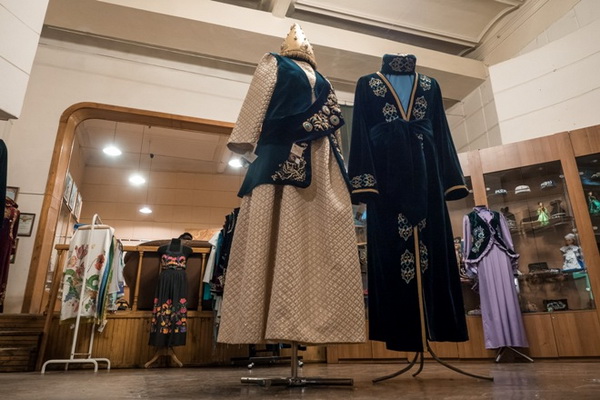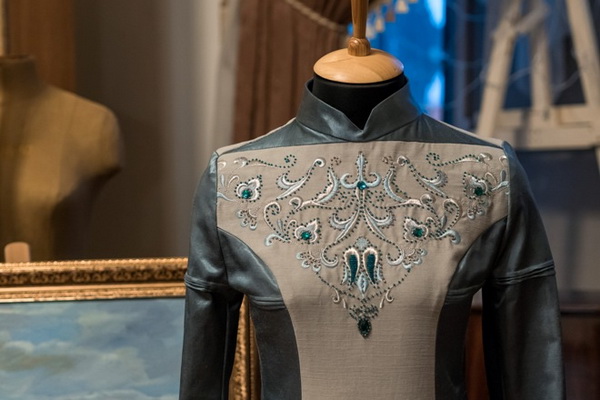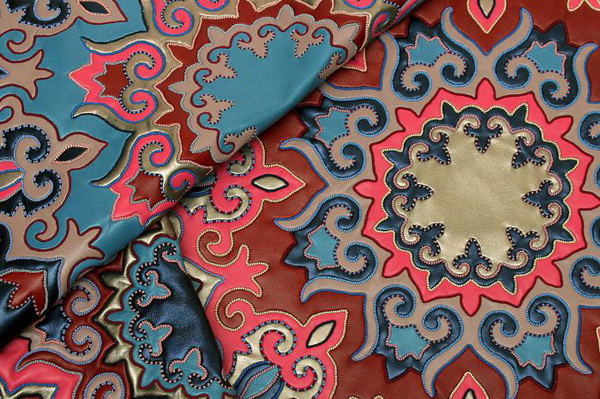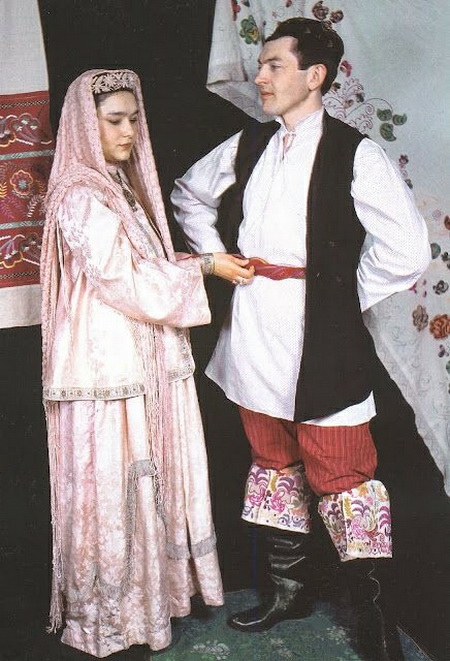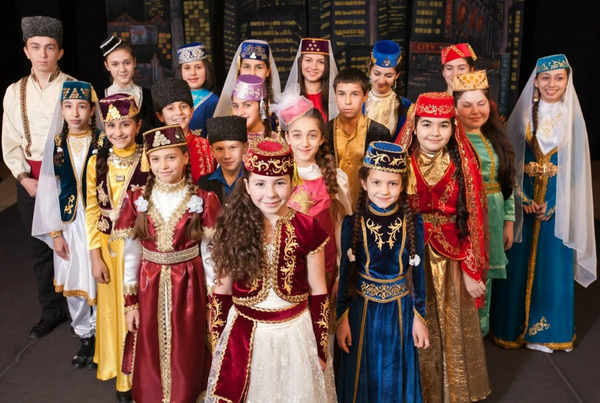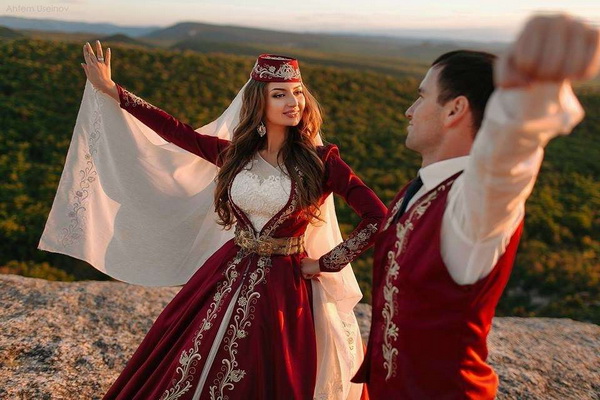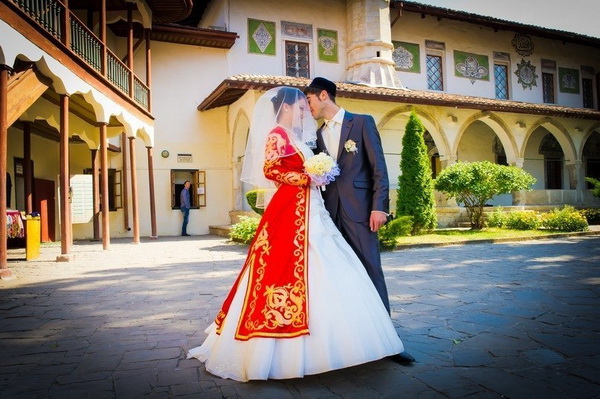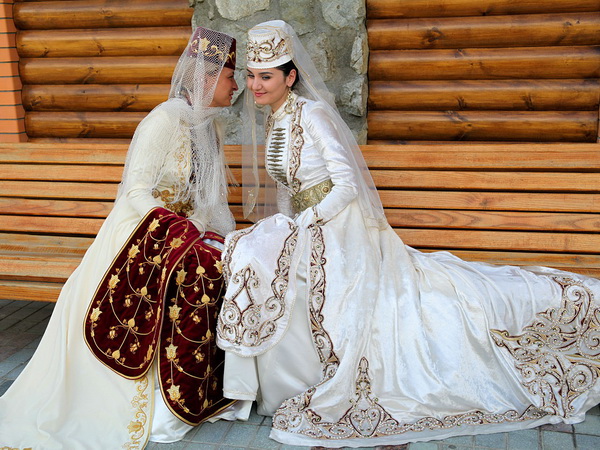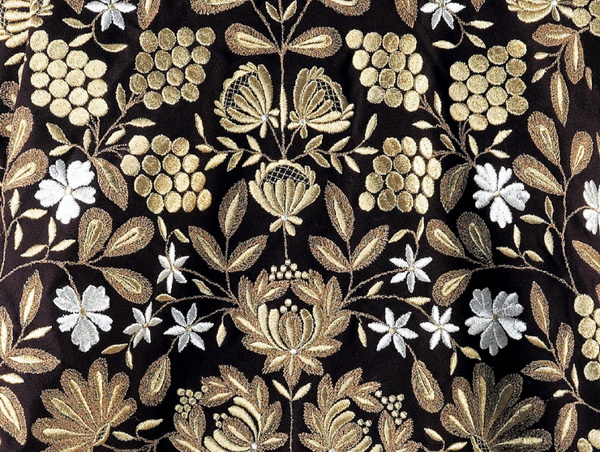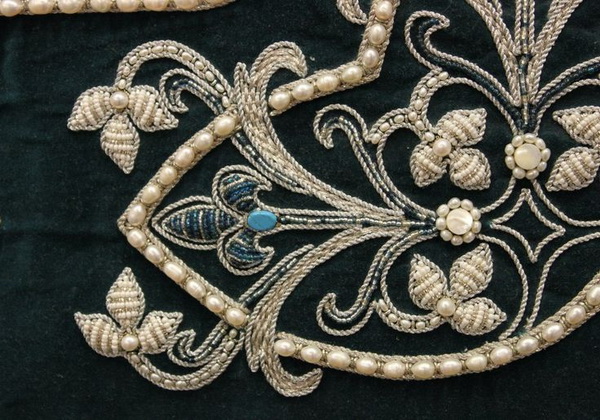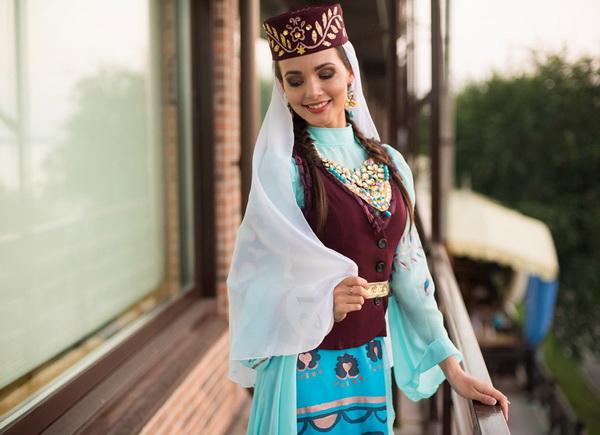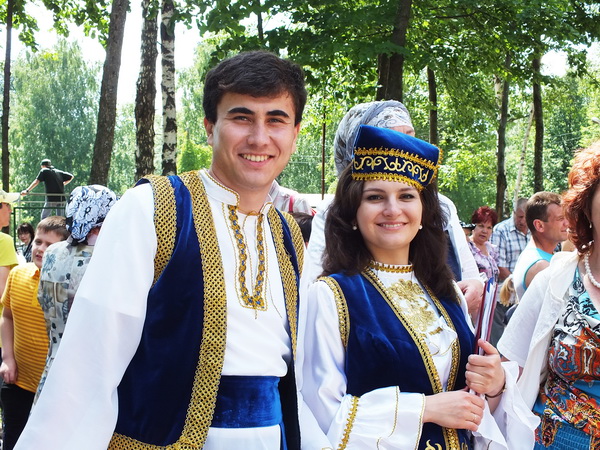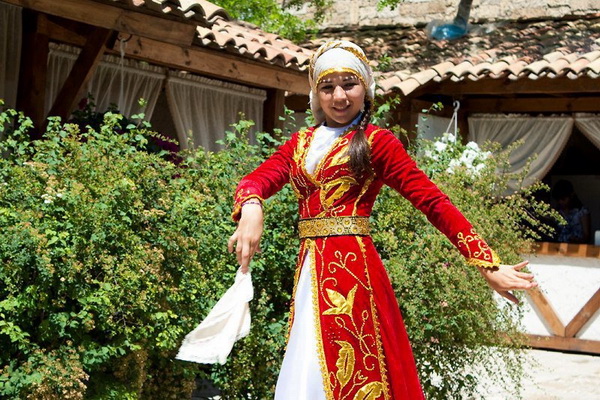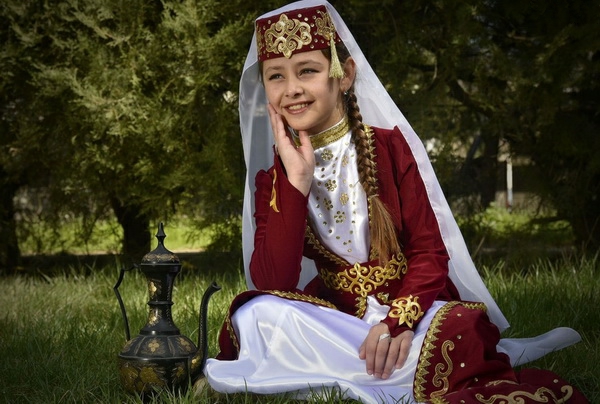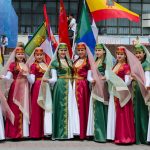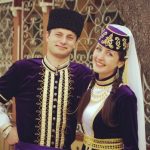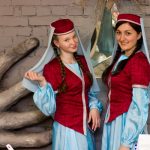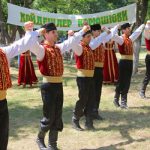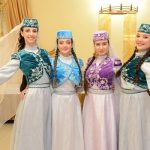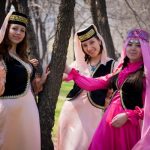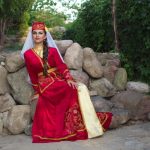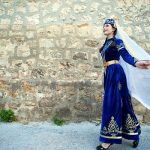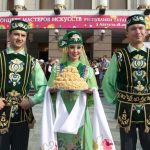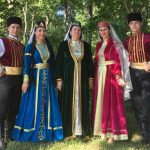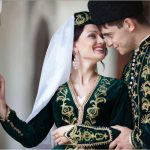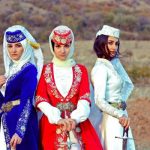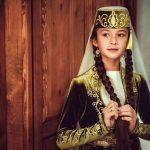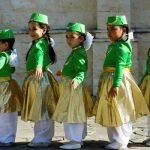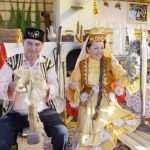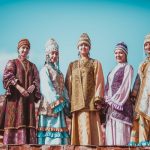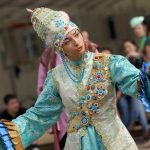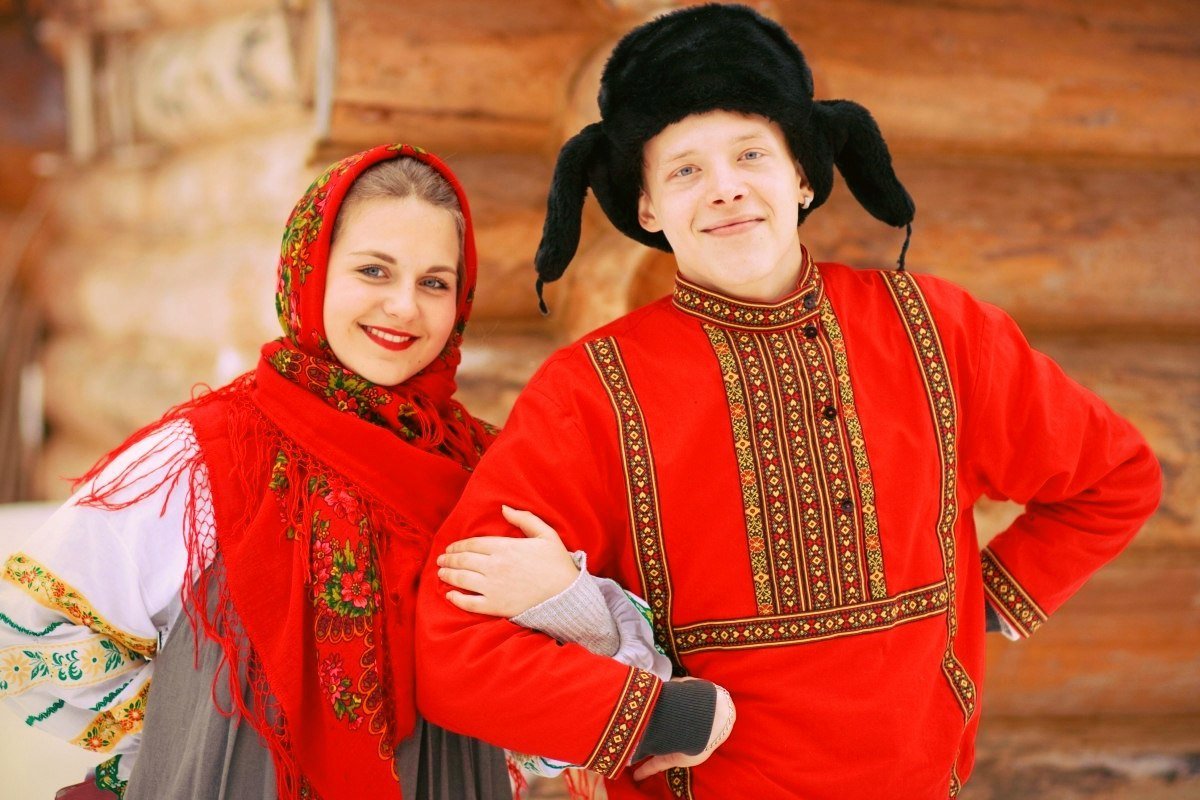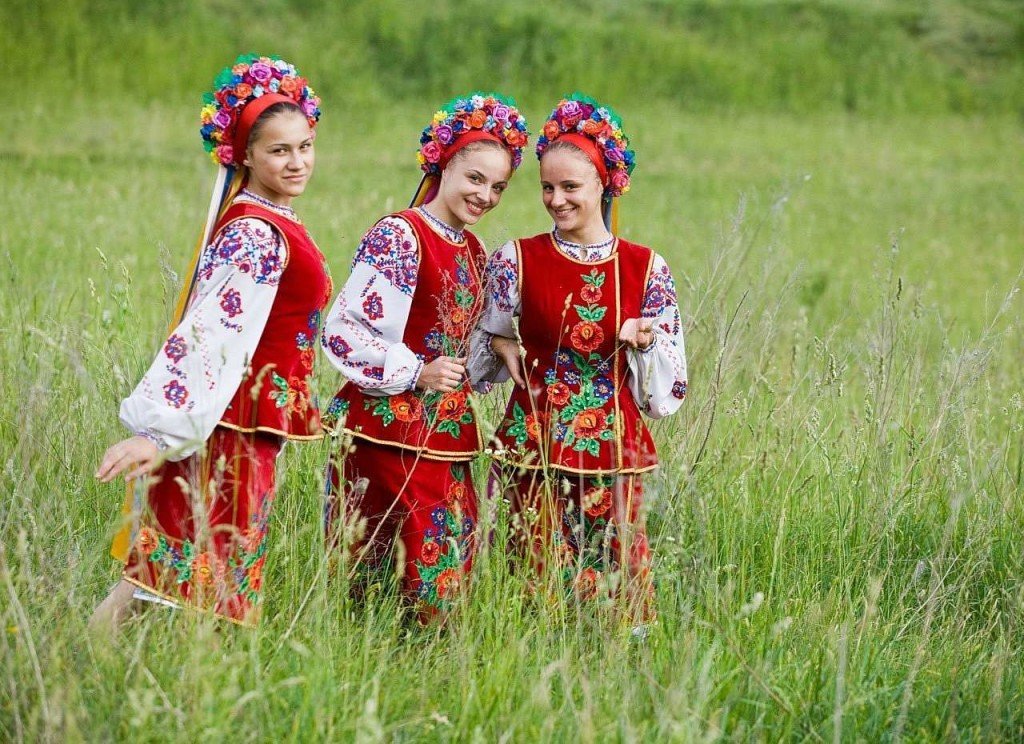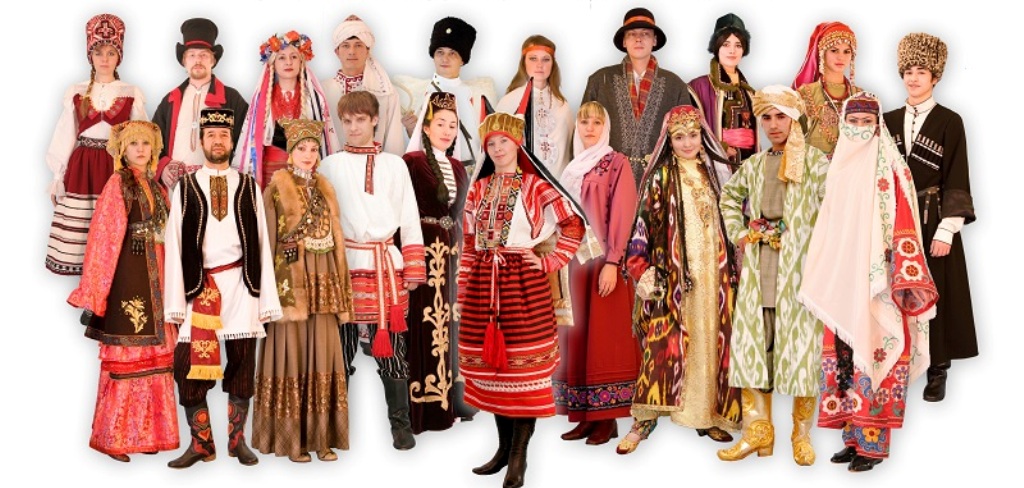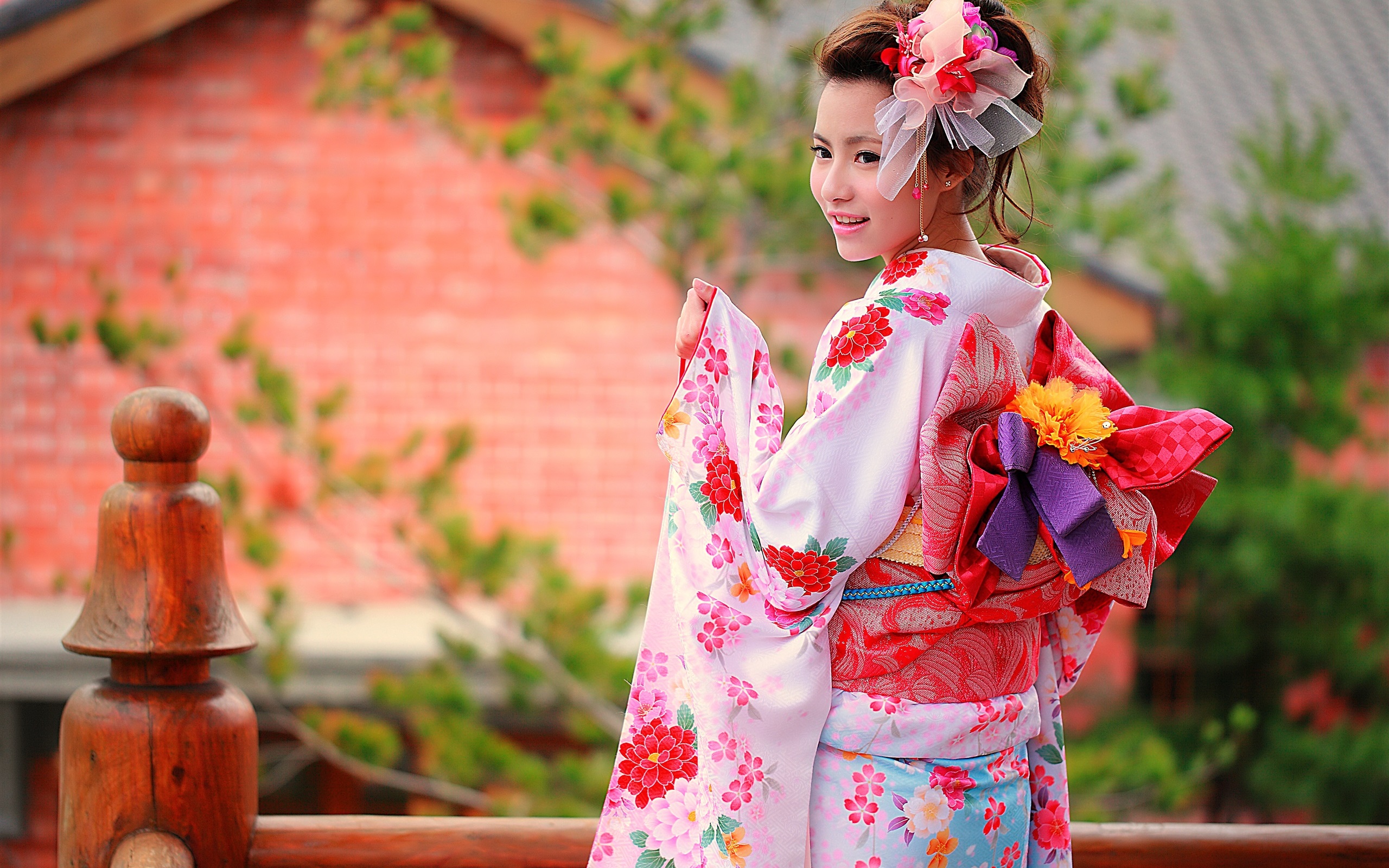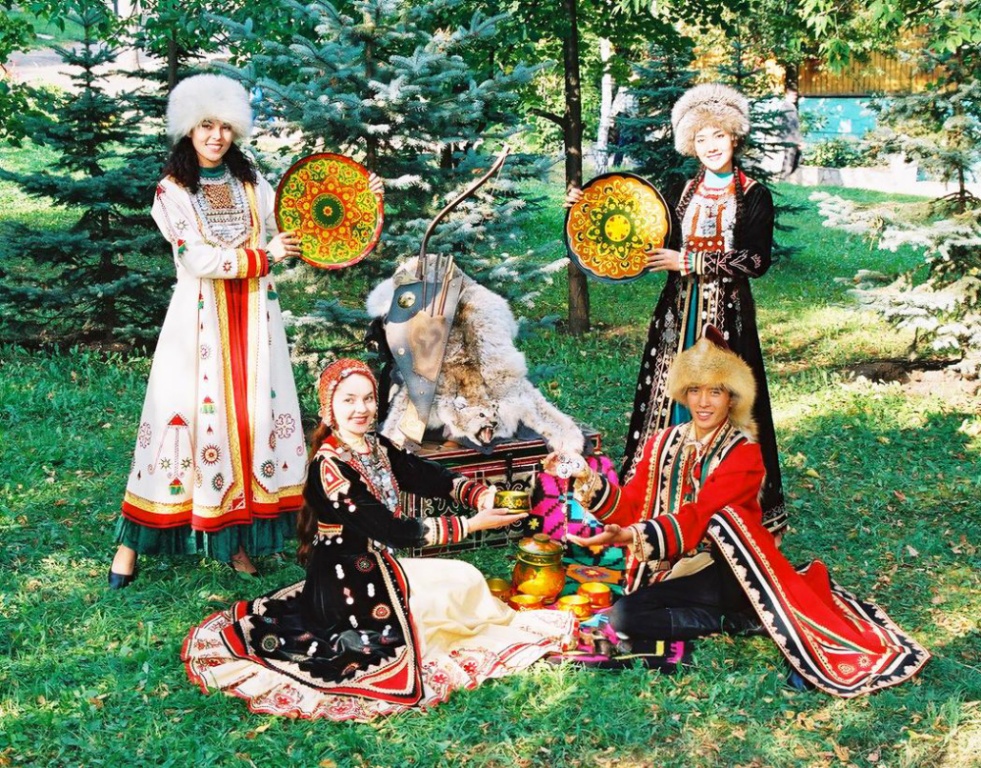The national costume typically reflects the skill of people, individual traits, character, aesthetic tastes, and reverent attitude toward nature. This is most clearly demonstrated in the colorful, rich traditional outfits of Tatar men and women. Their clothes delight with the most beautiful ornaments, fabrics of rich "oriental" colors, highly artistic accessories and jewelry. From time immemorial, the Tatar national costume has been a significant indicator of a person's social status, age, and reflected the secrets and traditions of the people. Despite the fact that today it is used primarily for celebrations, festivities, and performances, the respectful and reverent attitude of the Tatars toward the outfit remains the same.
A bit of history
The history of the creation of the modern Tatar national costume dates back to the 18th century, although, according to many historians and researchers, the main characteristic features of clothing began to emerge in the Middle Ages. The rather broad concept of "costume" combines things that were worn not only in Tatarstan, but also in the Volga region, Kazan, and Crimea. The formation of the outfit was influenced by lifestyle, locality, traditions, religion, and especially oriental motifs.
According to popular belief, the soul of the deceased left the body through holes and holes in clothing, so the Tatars were very scrupulous about these elements. To circulate positive energy and closeness to nature, any kind of cutouts were treated with special patterns, initially these were arrows, later they were replaced by spirals and curls. In addition, the fabric was covered with an ornament, which was used as a talisman. It was applied only to certain places: the patterns were placed as densely as possible on the upper part of a woman's outfit, because it is with the breast that every mother feeds her children, the pelvic area was considered especially intimate, so it was not decorated with anything.
The outfit was made using fur, natural soft leather, expensive cloth. Shoes and hats were selected taking into account the weather conditions. Jewelry with large stones, beads, feathers, laces, and expensive metals was actively used. A fully assembled set was multifunctional and variable, suitable for holidays and weekdays, horseback riding, nomadic life, and was widely used during the performance of national dances.
Today, national costume is used in folk art, at festivals, and for stage performances.
Peculiarities
The main elements of the national costume are a long shirt (kulmek), a loose robe, and wide trousers (yshtan). For girls, a lower bib (kukrekche, tesheldrek) and a Tatar apron were sewn, which hid the opening on the chest when moving or dancing. The clothes had to be loose, but in the female image there was always an emphasis on the waist.
Brief description of the features of traditional attire:
- a wide shirt that is not belted: for men - to the knee, for women - to the ankle;
- trousers: for a Tatar they could be striped, the women's version was always plain;
- The outerwear, which was made from different materials, was accordingly called differently: camisole, kazakin, bishmet, chabuly chikmen, chabuly tun; for Sunday and holiday visits to the mosque, men were given a chapan, and the outerwear of the Tatar woman had decorative stitching, fur, leather inserts, braid, and embroidery.
Despite all the brightness and colourfulness, the Tatar costume did not differ in the variety of colours. Cherry, white, dark burgundy, yellow and green were mainly used. The shade of clothing determined the age, wealth and marital status of a person.
The color white symbolizes old age and mourning among Tatars. Therefore, it was customary for the elderly to wear light-colored clothes or to attend funerals in such clothes.
The outfit and headdress, especially the festive version, were decorated with gold and multi-colored threads, beads, coins, and seed beads. The patterns on the clothes had animal or plant motifs, which showed the people's respect for nature and all living things.
Everyday outfits
Everyday Tatar costume was made in a minimalist style, all elements were freely worn. The Tatar woman's home headdress was a headscarf, and the men's was a skullcap. The national image also included special decorations that allowed one to externally determine a person's financial status and their status in society.
Cloth
Trousers, shirts, and outerwear had different lengths, widths, and decor, and were made from budget or expensive fabrics. Each traditional element fit loosely on the figure: the sleeves were wide, the hem of the skirt fluttered, and the camisole was wrap-around. Differences in everyday attire by gender:
- National costumes of Tatar women were made of cotton, silk, brocade, velvet, and linen. A long shirt resembled a dress; among the Crimean Tatars, it was complemented by frills and a trapezoid silhouette that hid the girl's large hips. A wide robe, camisole, or sleeveless jacket was wrapped on the right side; their length was to the middle of the thigh. Braid, beads, lace, coins, and bright ribbons were used to decorate clothing and headdresses.
- Men's clothing was made of cotton, linen, wool, and silk. The knee-length shirt had side wedges, a cutout for the head, and was not belted. The outer garment was wrapped and belted with a ribbon of silk, cotton, or velvet. Floral patterns or decorative stitches of silver or gold threads were used as decoration along the hem of the camisole.
The richly fur-trimmed Tatar national costume indicated the status of a married couple and their social status. The most valuable species were beaver, sable, arctic fox, marten, and silver fox.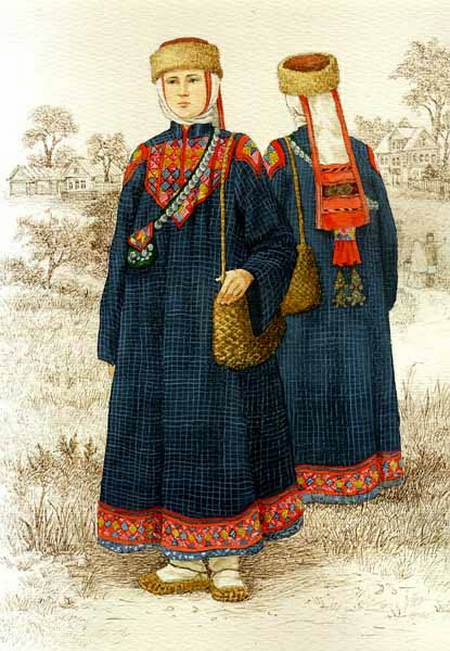
Headwear
A mandatory element of the traditional Tatar costume was a headdress. Girls wore a multi-layered "construction" on their heads, consisting of the following elements: fabric, a veil, a hoop, a hat or a scarf. The latter was used to fix the veil on the head.
Interesting facts about women's headwear:
- For girls and young women, single-color hats (burek) made of thick fabric or fur were offered.
- In the villages, Tatar women wore a knitted kalfak made of white fabric; city girls preferred a product made of expensive striped silk threads.
- Married ladies covered not only their hair with headdresses, but also their neck and body.
- Triangular, rectangular, and square veils were worn by older women.
The men's headdress consisted of two parts: the lower part (for everyday wear at home) and the upper part (intended for going out). For home use, a men's skullcap was used, which covered only the crown of the head. Felt or fabric hats, bureks, and turbans were worn over a small cap. Bright skullcaps with ornaments, made of expensive fabrics, were intended for young men. Adults and elderly Tatars chose single-color hats.
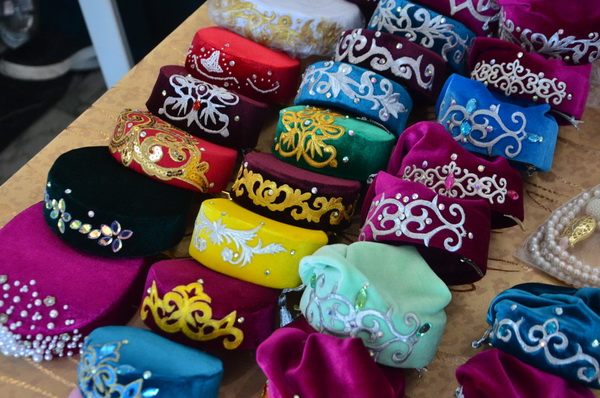
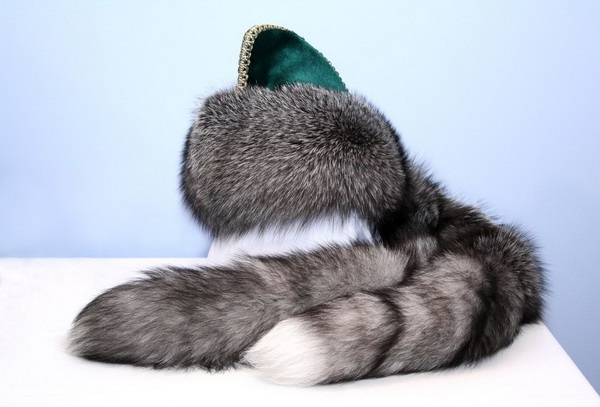
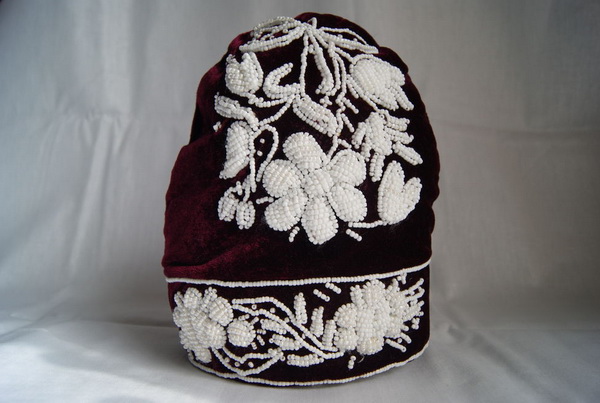

Shoes
The Tatars wore boots all year round. Softer leather was used for summer, and in winter the shoes were stuffed with sheepskin and cotton wool. Under the boots, felt boots, and galoshes they wore stockings made of cloth or woolen threads. They were mostly made of white.
The name of traditional Tatar boots varied:
- chitek were made of soft leather, they were intended for going out, patterned chitek shoes, made using mosaic technique, were worn for holidays and dances, such shoes could be afforded by wealthy townspeople or the clergy;
- Black leather ichigi were intended for everyday wear, and women's were shorter than men's;
- Chabata resembled bast shoes and were considered work footwear.
Any Tatar footwear has a characteristic feature: toes turned up. According to an ancient belief, one should not scratch one's native soil.
Tatars also wore felt boots in winter, and galoshes for housework. Shoes were chosen for celebrations and dances. The women's version had patterns, appliques, gold thread embroidery, and was often complemented by a small heel.
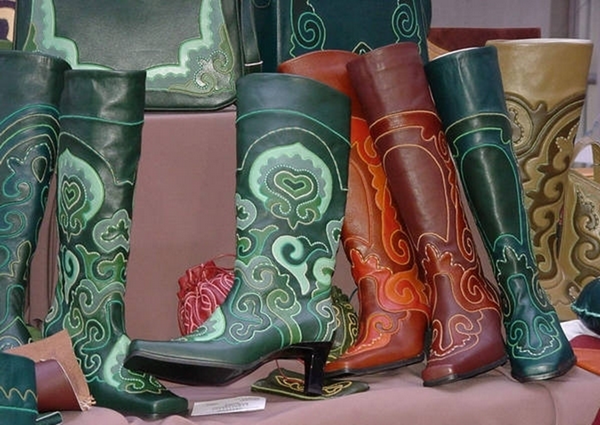

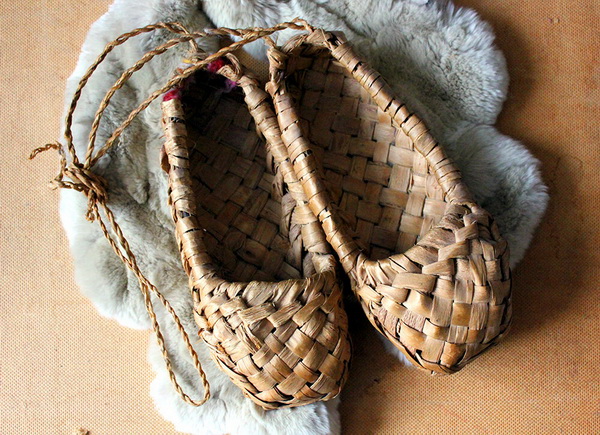
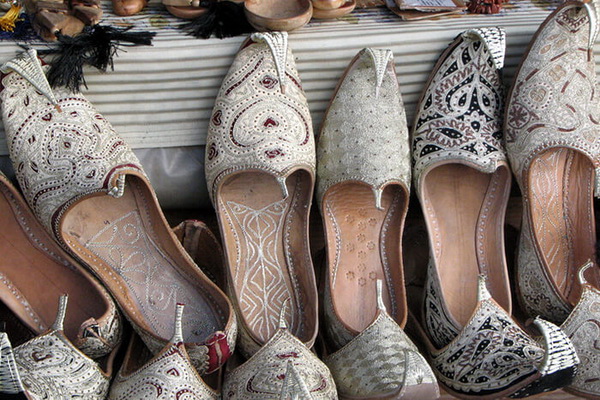
Accessories
The main male accessories were rings with large stones, signets, for a status woman a nakosnik (headdress) was offered. A mandatory part of the national costume is a belt with a large buckle. An unusual decoration was considered a sash - this is the name of an embroidered fabric ribbon that was thrown over the shoulder. If the girl adhered to Islam, it had special pockets for storing prayers.
To complement their everyday or festive look, women have always worn earrings in the form of rings or with large stones, beaded tassels. The necklace was massive and hid the too revealing neckline on the women's shirt, and also fastened together the main elements of the traditional Tatar costume. Under the influence of Russians, Caucasians, and Asians, fashionable girls added three-bead earrings and nose rings to their jewelry boxes.

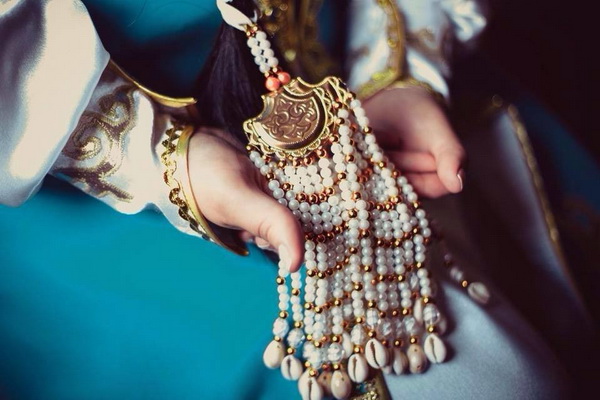
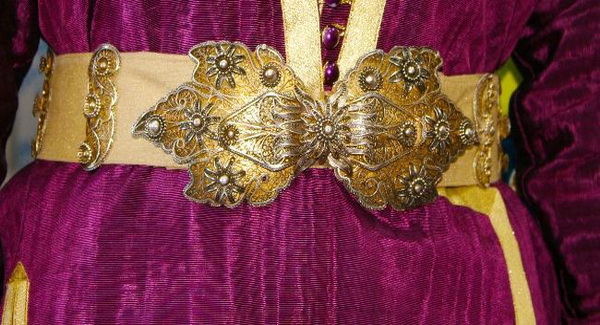
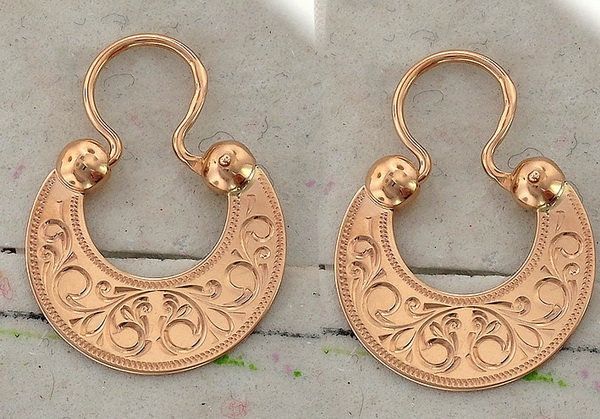
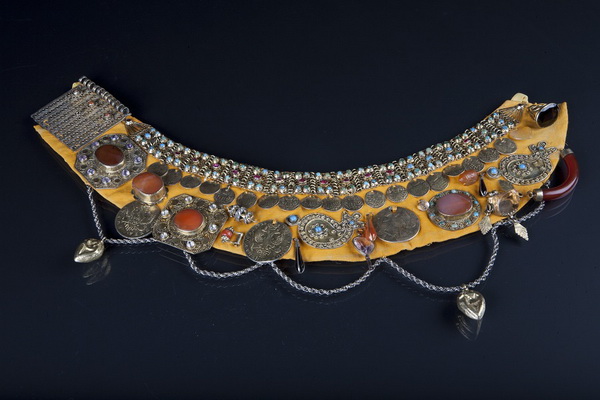

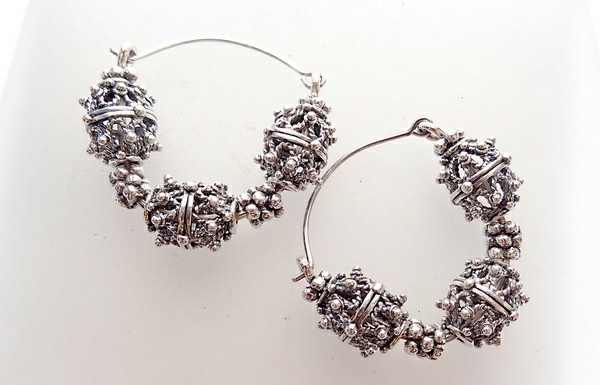
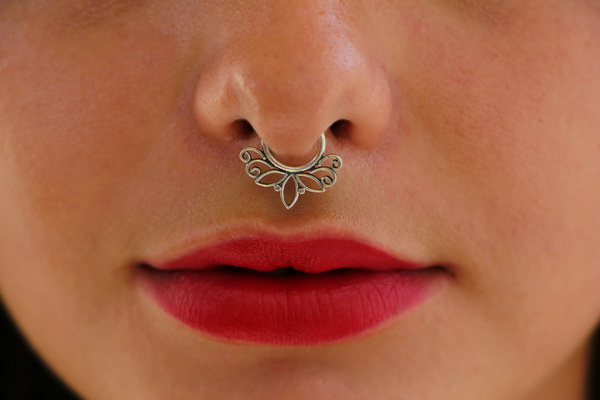
Children's costumes
Children's clothing for newborns was made of natural fabrics that allowed the baby to retain heat and not get sweaty. As soon as sons and daughters grew up, the Tatar national costume acquired gender differences. For girls, red, burgundy, green or blue colors were used. The clothes were multi-tiered, but always covered the neck and arms, made in maxi length. On the head - a national headdress with a long, reaching the middle of the back, translucent veil.
The boy's suit should be dark blue, brown or black. The shirt is long and wide, the sleeves are complemented with cuffs. A camisole is a must. The trousers are wide, made in a color contrasting with the top. Starting from 5-6 years old, decorative elements were applied to the shirt and camisole: embroidery, ribbons, beads. Teenage and youthful attire did not differ from adult clothing.
Festive national clothes
The national costume for the celebration has always had an abundance of decorative elements, such clothing was sewn from expensive fabrics, even today it looks chic. A special place in the wardrobe was given to the wedding dress. According to tradition, it was made of materials of cherry, green, turquoise, light blue colors. But in the modern version, there are already white outfits, which in the 18-19 centuries were considered mourning. Mandatory conditions are the closeness of the dress and the maxi length. The girl puts on a cloth or an embroidered kalfak on her head. A blue suit is offered for the groom, it has many patterns, satin ribbons, a fur collar. The newlyweds put on patterned boots made in the mosaic technique.
A modern groom can afford to wear a regular European suit, but decorate it with satin ribbons and ornaments. Instead of a jacket, Tatar wedding looks are complemented with a velvet camisole with short sleeves.
The Tatar dance costume includes a flapper-shaped vest trimmed with fur or a shortened camisole. The dancer wears a cap with a tassel or a veil on his head. The outfit must be loose, and the hem must be well straightened during active movements.
Color scheme and decor
The color scheme of Tatar costumes had slight differences by age and gender. Men and boys over 5 years old mostly wore black, dark blue or burgundy camisoles, trousers, shirts. Girls and women were offered green, light blue, red, cherry, yellow casual and formal clothes. The outfit was based on one dark color and complemented with lighter shades from the same color palette.
For sewing Tatar clothing, decorative stitches made with gold, silver, red, and green threads were used.
The fabric was decorated with plant ornaments, which were borrowed from Eastern culture. Asymmetrical patterns scattered over the outfit are usually divided into the following groups:
- steppe - poppies, forget-me-nots, and tulips predominate on clothing;
- meadow - the outfit uses daisies, cornflowers, bells, irises, strawberries, lilies of the valley;
- garden - drawings of asters, roses, peonies, and daffodils are applied to the hem of a camisole, shirt, or hat.
Waves, hearts, stripes, triangles were also used. Very often, the same pattern was embroidered on the Tatar outfit, but with different threads. This technique created polychromy and minimalism of the costume.
Modern interpretation
The modern costume is more of a stylization than a traditional outfit in its pure form. It has brighter colors that look flashy, elegant and attract attention at traditional festivities, during dances. The obligatory elements of the stylized folk costume are rich floral ornamentation, expensive fabrics, and kalfak. The cap can have more modern shapes, it is sewn to match the dress or the fly-away vest.
Modern girls mostly wear long A-line dresses with frills on the sleeves and a stand-up collar. The style may vary, but the closed nature of the outfit is still a must. The headdress has remained unchanged. The modern Tatar wears wide trousers and a camisole, sometimes a belt is used to gird the shirt. The men's suit has undergone virtually no changes, except that it looks much more stylish and appropriate for the fashion trends of the 21st century. Although there are increasingly more trends in the Europeanization of everyday clothing of the Tatars, the national costume is still deeply revered, because it vividly embodies the originality of the culture and the amazing skill of folk art, accumulated over the centuries.
Video

